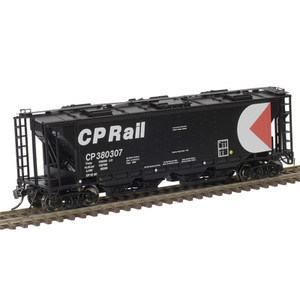With the onset of WWII, sheet steel became in short supply due to critical national defense applications. In 1942 the War Production Board authorized the design of seven standard freight cars that would utilize "composite" construction with wood replacing the sheet steel wherever feasible. Saving approximately 2 1/2 tons of steel when compared to all-steel construction, the war emergency hopper was one of the successful designs. Over 11,000 of these hoppers were constructed from 1942 through 1945 and many remained in service either in original form or rebuilt with steel sides, throughout the 1950's and 1960’s.
Features Include:
- Unique construction in die-cast and ABSFull interior details
- Accurate trainline details and brake system details
- Separately-applied grab irons and ladders
- Sprung hopper doors
- Removable coal load
- 50 ton Bettendorf die-cast sprung trucks
- Die-cast articulated couplers (3-rail)
- Die-cast scale couplers with internally sprung knuckles (2-rail)
- 33” scale metal wheels (2-rail)
- Minimum diameter curve (3-rail): O-27
- Minimum radius curve (2-rail): 24”
Four road numbers are available per road name.







